What Kind of Bad Communicator Are You?
Introducing the Dark Art-chetypes
Let’s face it, we’re all shitty communicators when we’re mad.
Yes, dear reader, even you. Even me, the Queen of Authenticity. I’m extra “authentic” when I’m angry. I have so many feelings that need to be spoken, so many logical arguments for why I’m right, so much false empathy pasted on top of beliefs about why you’re actually wrong.
I and my collaborators Geof Krum and Peter Benjamin have lately had a lot of fun mapping out a new class we want to teach, called Defense Against the Dark Arts.
I wrote a little about the Dark Arts way back in January, in one of the first posts on my Substack. Geof and Peter are expert thinkers and reality-manipulators, and I’m a perfect communicator, so who better to teach the class than the three of us? 😁
As part of our class prep, we’ve been mapping out what the Dark Arts actually are. Surprisingly, the OED’s definition is pretty accurate:
Dark Arts (n.) - 1. Sorcery or black magic, 2. Techniques or practices that are regarded as mysterious or dishonorable.
The second definition is the one we’re working with. Dark Arts are communication moves usually involving the use of resource, status, or authority power. They are performed, often unconsciously, to get our way in conversations.
The problem with using the Dark Arts is that if someone realizes you’re doing it, it breaks the social contract. You may then be ostracized from groups and relationships you care about.
For instance, if you often discredit other people at work, you may find yourself low on the social totem pole. If you play the victim too often, people may stop wanting to hang out with you. If you tell others “You’re being unreasonable” in arguments, they may begin to think the same of you.
Also, since these moves often involve the use of power, they are not good at creating the sort of equal status that characterizes fulfilling relationships.
When we do use the Dark Arts is when we’re mad. Almost all of us do it then.
Why? I have an opinion on this. I just made it up.
I subscribe to the “parts” theory of the self, á la IFS. We have multiple aspects of ourselves. Each of these aspects may even be different ages, depending on when they developed and how much they’ve been allowed out to play in the world.
For most of us, anger is an undeveloped part. Our parents shut down our displays of anger - tantrums, sulking, manipulation if they could see it - in childhood. Such displays are socially unsuitable.
Thus, our anger self is less developed than the rest of us. It hasn’t been allowed out as much. When it emerges it’s still that 3-year-old trying to get the upper hand, looking for attention or wanting to win.
How is it that we try to win?
A List of the Dark Arts
Geof, Peter, AI and I made the most comprehensive Dark Arts list we could a few weeks back. I’ve summarized some of the main moves below. And, because of who I am as a person…I’m making a quiz of Dark Art-chetypes where you, too, can assess what kind of bad communicator you are. 😂 That will be provided to paid Substack subscribers in a whenever I finish it amount of time.
(Side note: I am really into quizzes because I spent most of last year building a program called the Relating Languages, much of which revolved around psychometrics. If you want to try out the quiz I built for that, you can do so here. There is a tiny 5-minute version and a much more in-depth version, for which I did the research. It’s also for communication styles. Yes, I have a theme.)
Note that we ALL do ALL of these. You may see actions in each that make you think, “But that’s just normal…isn’t it?”
Remember that the line between the Dark Arts and the Grey Arts is very thin, and I don’t believe any communication act (except maybe the act of calling yourself out on your own tendencies…but even that can be done manipulatively!) is a White Art. Everything we do involves power and manipulation in some way.
I know that sounds…well, dark. But most things we do also involve altruism and awareness. Both are true. We are social beings, and thus our brain’s entire reality is weighing and playing with our status relative to others.
Thus, what turns a Dark Art into a Grey Art is intention.
If you are using a move for the purpose of vulnerability and/or genuine connection, you are still manipulating, but probably not going to do harm.
If you are using a move unconsciously - if someone could call you on it and you would say, “No I’m not!” - then it’s probably a Dark Art.
That being said, here are 5 Dark Art-chetypes. These focus on direct power actions that occur in conversation, not indirect ones such as building coalitions behind someone’s back. I’m sure that’s a paper all its own 🙄
-
The Conversational Controller
-
The Dismisser
-
The Attacker
-
The Comforter
-
The Submissive
As a lot of the Dark Arts have to do with power, here are the power positions I see each of these artchetypes adopting:
-
The Conversational Controller - HIGH
-
The Dismisser - HIGH
-
The Attacker - HIGH
-
The Comforter - EQUAL
-
The Submissive - LOW
In the following sections, I’ll give a meme for each of these, acts you might see the artchetype doing, why we go into this mode, and some things you might do to interrupt your own tendency. I won’t talk about how to relate with the artchetype - that’s a longer topic for future articles, and for once, I’m trying to keep this reasonably-sized. The scope here is recognizing and working with your own tendencies.
Let’s get to it!
The Conversational Controller
The first Dark Art-chetype is the Conversational Controller. To wit:
-
You choose to stand while others are seated, subtly asserting your dominance.
-
You set the space and time for discussions: “Let’s have this conversation at my house” or “I only have 5 more minutes for this.”
-
You step closer to other people, encroaching on their personal space.
-
You overload others with information.
-
You argue details instead of the wider point.
-
You raise your voice during discussions to make your points heard over others.
-
You fill the entire space with words so nobody else can get their opinion in, and you can say your full piece without being interrupted.
-
You slow down your speech so others have to follow your pacing, or wait for you to finish.
-
You ask a barrage of questions so the other person remains on their back foot.
-
You set overly firm boundaries.
-
You refuse to talk about a topic anymore, and end the discussion even if the other person(s) want to continue.
We go into Conversational Control when we feel power-under. Finding ways to assert ourselves, directly or indirectly, seems like it will give our power back. We overtalk, over-question, set the space, control the pacing, or as a last resort, stonewall so nobody can talk with us.
If you tend to be a Conversational Controller, ask yourself what control you absolutely need in order to be safe in a conversation. To be even more skillful, ask yourself whether safety is your primary goal, and then what setup would fulfill the more primary goal you have.
Ask others to watch your tendencies, and give them strategies for how to intervene if you’re dominating the space. I find that little hand signals work well - agreeing to touch the controller’s knee if they’re starting to overtalk, or make a “slow down” gesture you’ve pre-determined. Or tell them three times that they’re plum-bobbling, for my Name of the Wind fans.
The Dismisser
The next Dark Art-chetype is the Dismisser. As seen in the following episodes:
-
You roll your eyes while others are talking.
-
You tell people “That’s just your point of view”.
-
You accuse others of projecting.
-
You straight up gaslight and tell people that what they’re experiencing didn’t happen.
-
You dismiss or patronize others: “Jane just isn’t cut out for this type of work, is she?”
-
You question others’ credibility.
-
You shoot down others’ objections as logically or factually incorrect, instead of addressing the underlying concerns.
-
You intentionally misunderstand the other person’s words, and either strawman (reduce) them, dismiss them, or choose an interpretation that benefits you.
-
You make ad hominem arguments such as “I can’t trust you because you’re not black/white/rich/poor/a scientist/a Democrat/etc.”
-
You use a psychological or personality trait to dismiss someone’s entire point of view (therapizing): “You only think that because you’re a narcissist.”
-
You compare people’s perspectives to weird edge cases where they have horrible implications (“If we practice gun control, our liberties will steadily be degraded until none of us can poop without permission”)
We Dismiss when we think we’re in the right, and the other person is trying to stand in the way of us/logic/goodness. Dismissing can either be done casually, or it can come with a degree of anxiety that verges on attack.
The difference from attack is that it’s hard to directly address Dismissing moves. They twist reality. You can end up not knowing what your own point of view was, or whether it existed at all.
If you tend to be a Dismisser, notice if you are starting to think something like, “Their perspective is stupid” or “They make no sense”. This is probably a sign that you are getting into your “I’m right” mindset.
If you notice this, immediately find a question you can ask, instead of an assertion to make. There is probably (always) a LOT of information you’re missing about the other person’s perspective - and you may end up looking stupid or like an asshole if you don’t check your assumptions.
The Attacker
The next Dark Art-chetype is the Attacker. Demonstrably:
-
You cite a litany of past harms the other person has done against you.
-
You tell them all the ways they are in the wrong.
-
You ask pointed questions that make others look stupid, such as “You knew this was going to happen, didn’t you?”
-
You interrupt frequently.
-
You impugn others’ character: “You’re a narcissist and a cad.”
-
You gather coalitions of people to come back up your view. “I and all these other people are here to set the record straight!”
-
You invade others’ personal space.
-
You make threats or cite consequences.
-
You use physical violence to gain the upper hand.
We Attack when we feel physically or psychologically compromised. We want to head off possible harm before it happens, even if that means causing harm ourselves. Even those who rarely attack may go into this mode if they are protecting someone else.
If you are prone to Attacking, try to pause and ask yourself, “What harm do I imagine happening here if I back down?” Then ask, “Is that actually likely to happen? What percentage possibility would I put on it?” If you can, also ask the counterfactual: “What harm is likely to happen here if I keep attacking?”
A great tool for attackers is the “pause” button. Have an agreed-on signal with a partner or friend for when you stop the conversation and take a step away. Ones I’ve heard of in the past are the phrase “Let’s just stop this for now”, using a safeword, or giving context that you will physically leave the room if your attack-prone partner raises their voice (and then following through a couple of times).
The Comforter
Oh, the Comforter. I imagine I’m going to get the most pushback from y’all on this one, because nobody wants to imagine that the moves I’m about to name could be used as Dark Arts.
So let me first give you an example. One of my teachers in the field of relational work used to have what people called a “reality warp” effect. You would go into a meeting with him having a point of view. He would totally get and understand that point of view, make you feel seen and heard, and then by the time you got out…you would have agreed to all sorts of things that in retrospect, made no sense.
This is manipulative empathy. It is a Dark Art that relies more on intention than action. But when used unconsciously, because we have so few barriers to empathy, it can be the most dangerous of all.
What does it look like?
-
You use a soothing voice.
-
You empathize with the other person’s point of view without fully exploring it. “Of course I understand…”
-
You offer false affirmation: “You’re such a wonderful person.”
-
You manipulate shared interest. “I know we both care about Charlie, so we should…”
-
You assume consensus without checking that everyone is on board: “Since we’re all on the same page here…”
-
You assume good intent: “I know you’re a reasonable person, so of course you would…”
-
You create a false sense of security: “You can stop me at any time.”
-
You subtly mimic others’ posture, words, and vocal tone to create rapport.
-
You choose vulnerable examples that you think will increase others’ liking of you
-
You create blank-check emotional debt by helping someone when they need it, and then expecting a favor in return.
Why do we Comfort? Frankly, because it’s effective. Used unconsciously - as most of us do it - these actions seem prosocial. Often it’s only in retrospect that we, or others, realize we were doing them to advance our own goals.
If you tend to be a Comforter, notice the effect you are having on others. Do they tend to walk away from your conversations feeling genuinely better about themselves? Does it feel like arguments get resolved or just papered over? You may not see whether your actions are Dark or Grey in the moment, but their effects will tell you the difference.
If you are being truly loving and empathetic, then your relating should make others more self-affirmed, confident, and caring - even when their needs conflict with yours. If they feel loved in the moment but confused lately; if they come to depend on you for affirmation; if the exact same argument recurs over and over again…then you may be acting as a Comforter, not a catalyst for connection and growth.
The Submissive
Lastly, the Submissive. Can I tell you what this looks like?
-
You make yourself physically smaller to look innocuous.
-
You use someone’s sense of guilt or obligation to make them feel indebted to you.
-
You make appeals to the relationship: “Don’t you love me?”
-
You drop your perspective and give in to the other: “Anything you say is fine”. This is especially troublesome when you later blame them for overriding you.
-
You say passive-aggressive things such as “Fine, whatever” and “I’ll just do it myself”.
-
You take passive-aggressive actions such as “forgetting” about responsibilities, or refusing to help in areas not directly connected to the argument.
-
You emotionally blackmail by threatening to harm yourself physically or psychologically: “Well if you do that, I guess I just won’t take any time off work this month…”
-
You avoid setting boundaries even when you need them.
-
You make indirect asks and blame others when they don’t pick up on them.
-
You preface every idea with a caveat so it’s harder to shoot down: “This may be dumb, but…”
-
You play the victim: “You just don’t understand me.”
-
You whine: “But you promised!”
We go Submissive when we feel unsafe, and don’t want to or don’t know how to assert ourselves again. The problem is, some of us feel chronically unsafe; or at least our young anger-selves do. We end up Submitting even when the situation is psychologically and physically fine for us.
If conflicts haven’t been resolved in a relationship over time, we can start going Submissive just out of exhaustion. If our conversational partners are Attackers, we may also get pushed into this mode. Many people, however, use being Submissive as a pre-emptive form of defense.
If you tend towards Submission, imagine that there is a wiser, older self behind you. Let that self give you strength through your back. Imagine their hands on your shoulders or their arms around you. Let yourself receive and remember your power, instead of giving it away.
Y’all, I was SO excited to write this article for you. Let me re-list some key points and then we’ll close this baby up! (ew.)
Why do we use each Dark Art-chetype?
-
We go into Conversational Control when we feel power-under and want to take the power back.
-
We Dismiss when we think we’re in the right, and the other person is trying to stand in the way of us/logic/goodness.
-
We Attack when we feel physically or psychologically compromised.
-
We Comfort because it’s effective and makes us feel good.
-
We go Submissive when we feel unsafe, and don’t want to or don’t know how to assert ourselves again.
We do all of these. All of us. We are Dark Artists, wielding our vast powers of social manipulation without even realizing how strong our skills are. We each specialize in one of these arts, for the most part.
What if, instead of using our Dark Arts, we taught others how to calm us down?
How to combat our worst tendencies?
How to use their own Dark Arts for restorative, rather than retributive, ends?
This is the world we dream of creating.
I would love to Dom you into creating it with us.
Your Loving Thought-Dom,
Sara
P.S. If you want to learn Defense Against the Dark Arts, we’re hoping to have the specific class out soon. BUT! One version of it already exists in our upcoming Art of Difficult Conversations class. Check it.

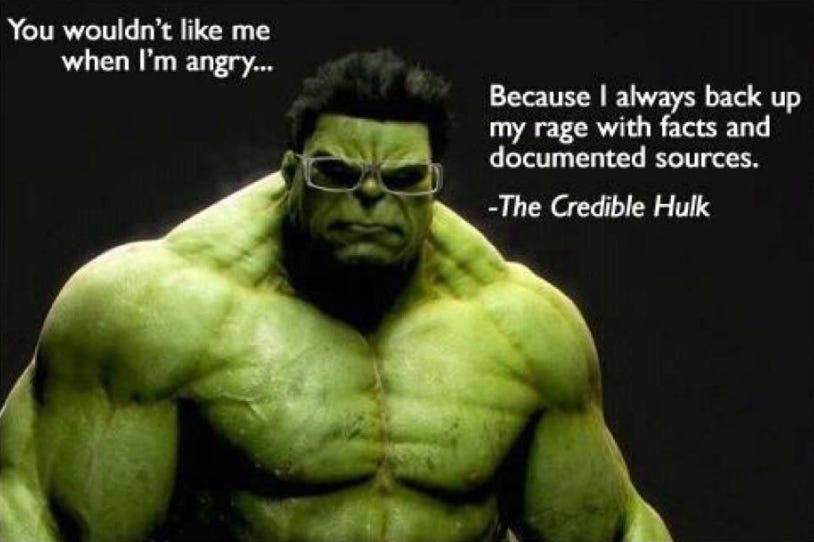

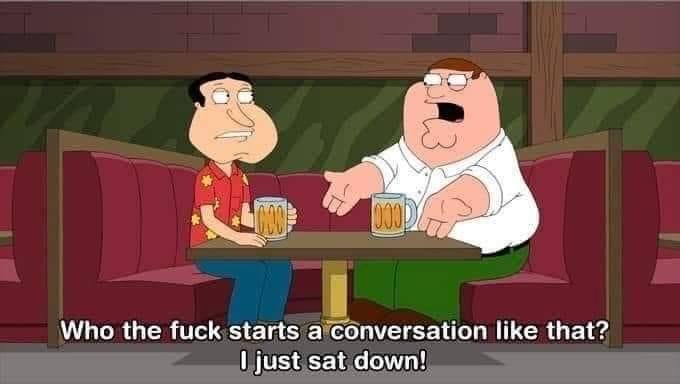
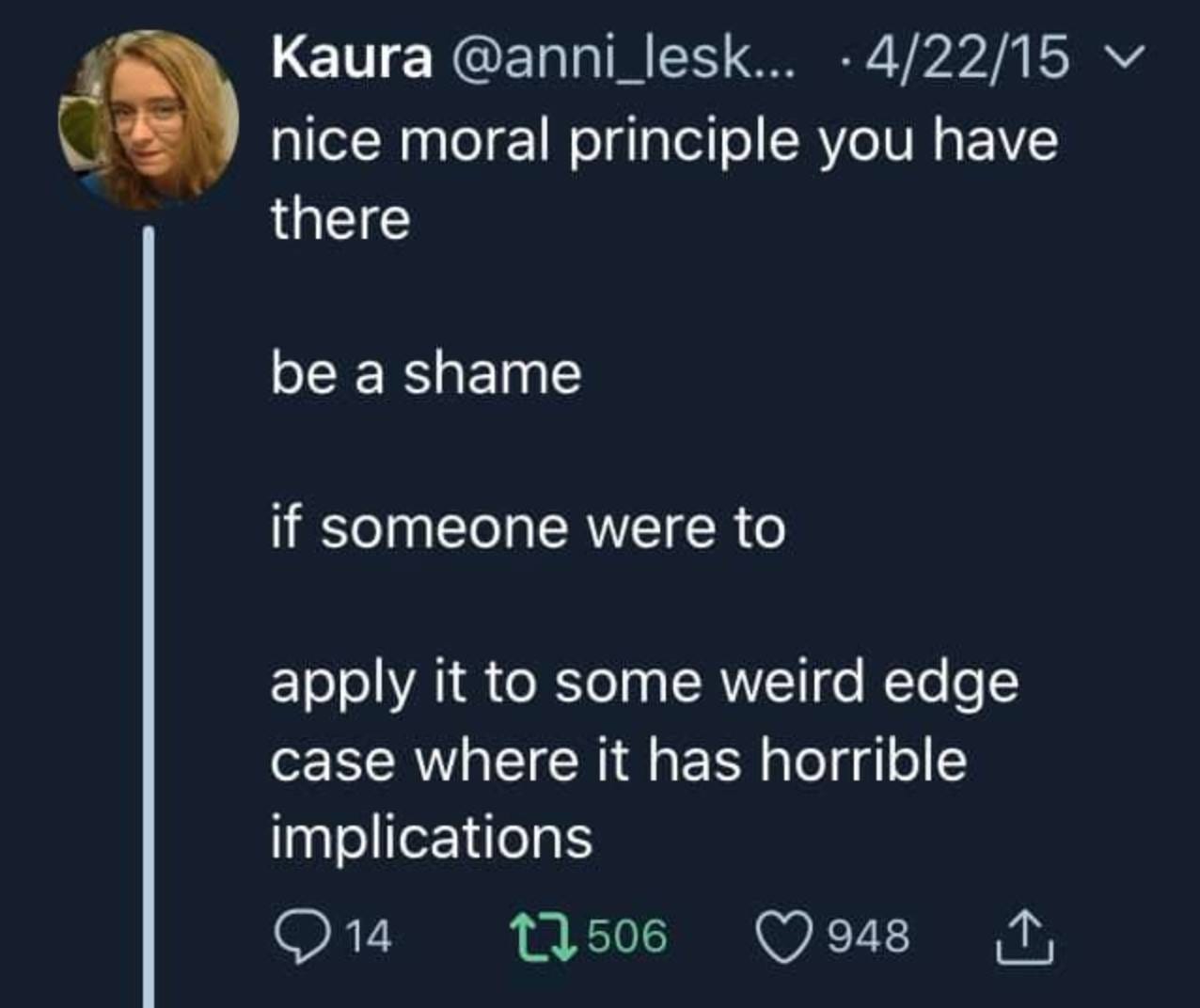
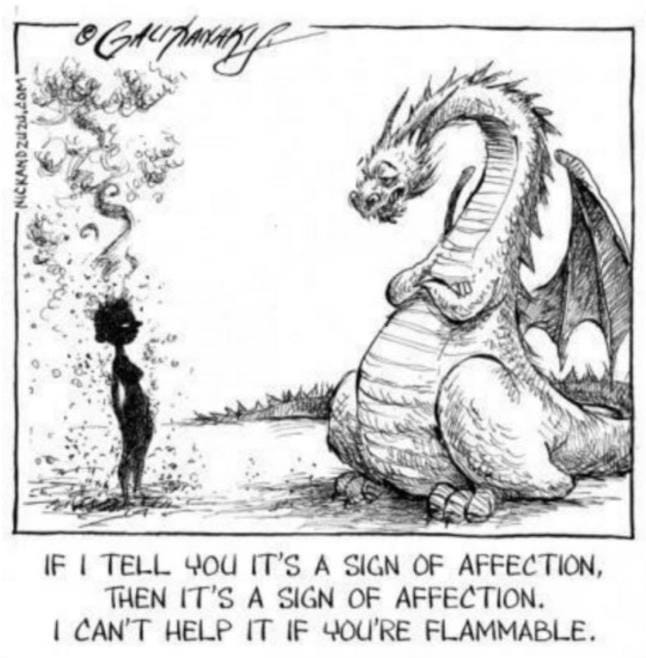

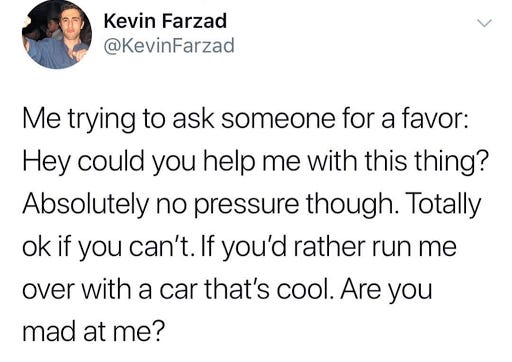





Responses